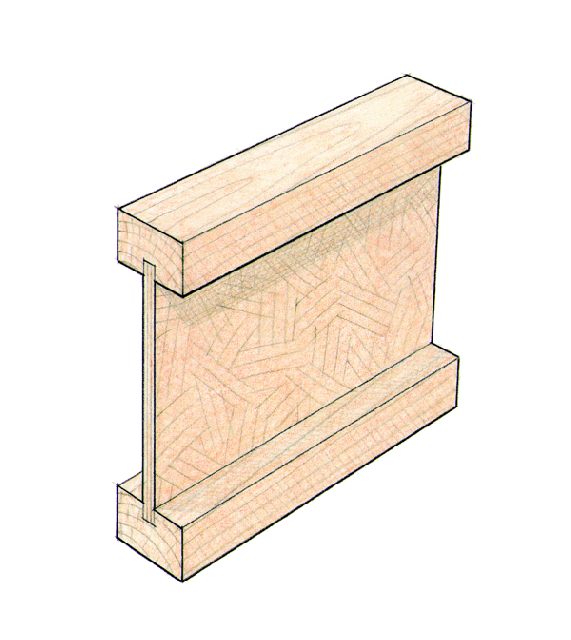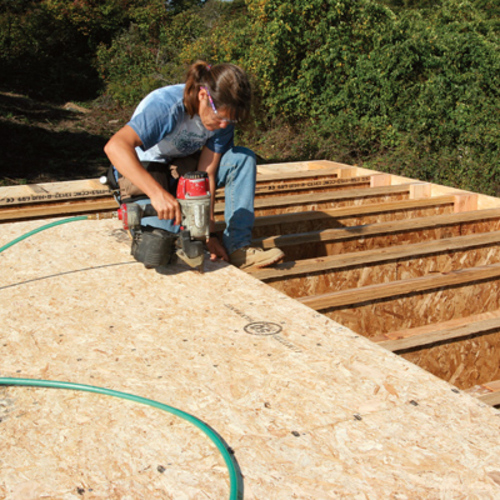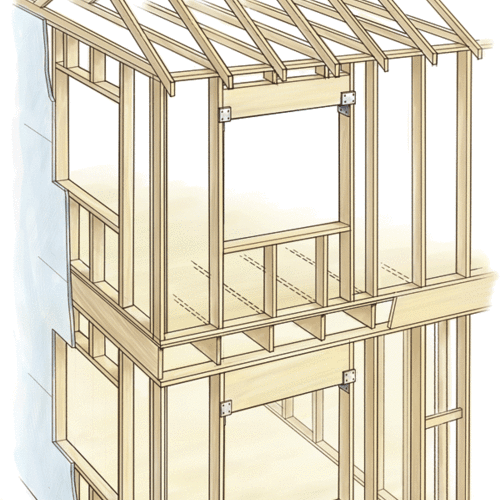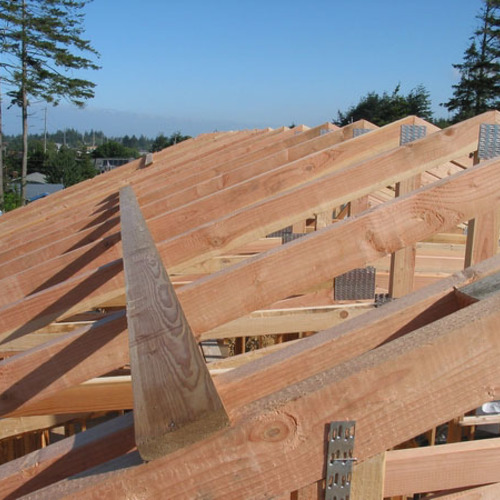ABOUT ENGINEERED LUMBER RAFTERS
###Both I-joists and LVLs can be used for rafters
I-joists
The flanges are sawn from small-diameter trees, and the webs are a type of oriented strand board (OSB) that’s made of wood fiber from underused and quickly regenerating tree species. I-joists are more expensive than dimensional lumber, but they are uniformly straight and don’t have the knots, splits, and other defects that are increasingly common in sawn lumber. They also come in longer lengths than dimensional lumber. I-joists, however, are not interchangeable with dimensional lumber, and framing techniques have to be adjusted, possibly with the help of an engineer. Using I-joists in roof framing has proved to be more time-consuming for some builders. Connections at wall plates and the ridge, for example, are more complicated.
LVLs
LVLs are useful in cases where long spans rule out the use of dimensional lumber. LVLs can be handled much like conventional lumber but, like I-joists, LVLs make better use of limited wood resources.
A framed roof is likely to consist of more than one type of engineered component. Common rafters could be I-joists, for example, while LVLs could be used to carry extra loads around roof windows or dormers.

This article is only available to GBA Prime Members
Sign up for a free trial and get instant access to this article as well as GBA’s complete library of premium articles and construction details.
Start Free TrialAlready a member? Log in












0 Comments
Log in or become a member to post a comment.
Sign up Log in